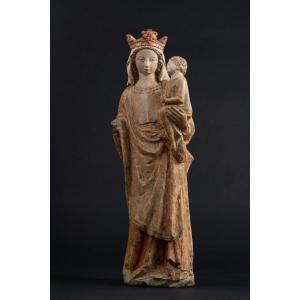the statue of Isabella of France that once adorned the transept of the old collegiate church in Poissy.
These characteristics, combined with the simple rhythm of the folds in the mantle alternating with smoother areas, the clean lines of the borders and the position of the Child, are found in a well-defined body of sculpture, mainly located in Lower Normandy, in the Cotentin region, to which the beautiful Virgins of Blanchelande Abbey and Flottemanville are linked. Strongly influenced by the royal art of the Île-de-France region, propagated by the Vexin region and certain prestigious sites such as the Collegiate Church of Ecouis, these pieces nevertheless have a more pronounced hip than that of our sculpture, which is more frontal, and the draperies are finished in elegant scrolls, far from the sobriety of our Virgin's mantle.
This elegant simplicity, which gives our statuette its strength, as well as the nature of the limestone from which it was carved, a Tonnerre-type limestone, lead us to look for an origin further south, in particular in northern Burgundy where the Virgin's small mouth with thin lips forming a pinched smile and her eyes with swollen emphasised eyelids are very common in productions originating in the Auxois region. In Villaines-les-Prévôtes, and even more so in Talant, our work has some equivalents, albeit with a slightly broader canon.
Full of tenderness, charm and mystery, this sculpture bears witness to the spread of a formal language developed at the beginning of the 14th century in Paris and adopted with equal elegance and subtlety a few decades later throughout the Parisian basin.
This elegant statuette features the Virgin Mary holding the Child high on her left arm. The inclination of Jesus' head expresses the tender complicity between a mother and son, typical of Gothic Virgins of Tenderness, whose familiarity seeks to win over the faithful with feelings and compassion. Dressed in a long gown belted at the waist and a cloak draped like an apron over her legs, based on the canonical model of the famous Virgin of Jeanne d'Evreux, our Virgin is perfectly in keeping with the graphic and plastic research of the first half of the 14th century, under the reign of the last Valois, "Les Rois Maudits" ("The Cursed Kings"). Thus, Mary's short veil, held on her head by a beautiful her head by a beautiful fleur-de-lys crown, her youthful features and the simplicity of her draperies find a distant echo in some of the most in some of the most famous royal prototypes of the early 14th century, such as the statue of
the statue of Isabella of France that once adorned the transept of the old collegiate church in Poissy.
These characteristics, combined with the simple rhythm of the folds in the mantle alternating with smoother areas, the clean lines of the borders and the position of the Child, are found in a well-defined body of sculpture, mainly located in Lower Normandy, in the Cotentin region, to which the beautiful Virgins of Blanchelande Abbey and Flottemanville are linked. Strongly influenced by the royal art of the Île-de-France region, propagated by the Vexin region and certain prestigious sites such as the Collegiate Church of Ecouis, these pieces nevertheless have a more pronounced hip than that of our sculpture, which is more frontal, and the draperies are finished in elegant scrolls, far from the sobriety of our Virgin's mantle.
This elegant simplicity, which gives our statuette its strength, as well as the nature of the limestone from which it was carved, a Tonnerre-type limestone, lead us to look for an origin further south, in particular in northern Burgundy where the Virgin's small mouth with thin lips forming a pinched smile and her eyes with swollen emphasised eyelids are very common in productions originating in the Auxois region. In Villaines-les-Prévôtes, and even more so in Talant, our work has some equivalents, albeit with a slightly broader canon.
Full of tenderness, charm and mystery, this sculpture bears witness to the spread of a formal language developed at the beginning of the 14th century in Paris and adopted with equal elegance and subtlety a few decades later throughout the Parisian basin.










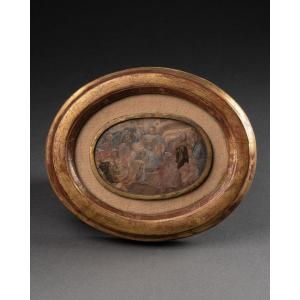


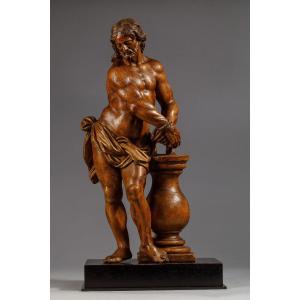
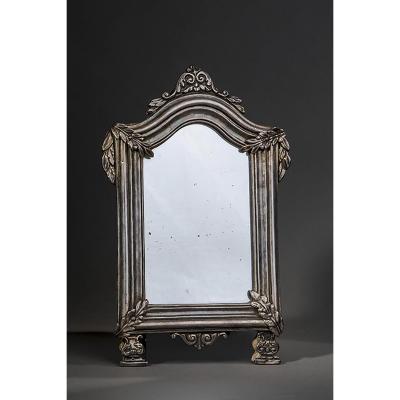

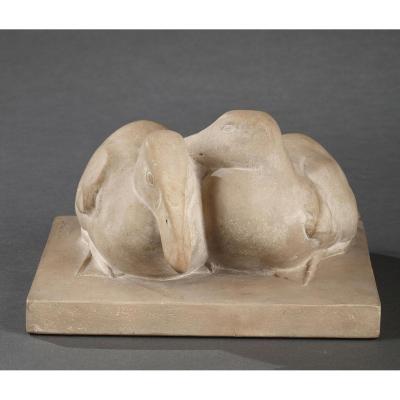
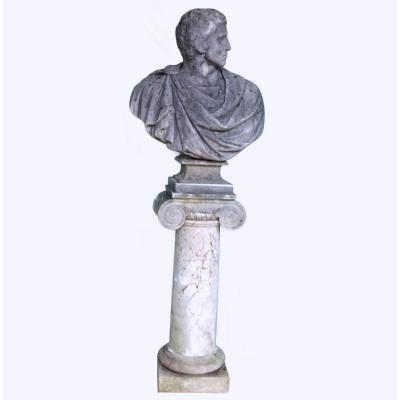
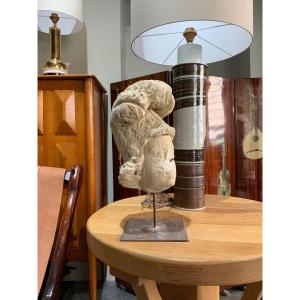






 Le Magazine de PROANTIC
Le Magazine de PROANTIC TRÉSORS Magazine
TRÉSORS Magazine Rivista Artiquariato
Rivista Artiquariato
